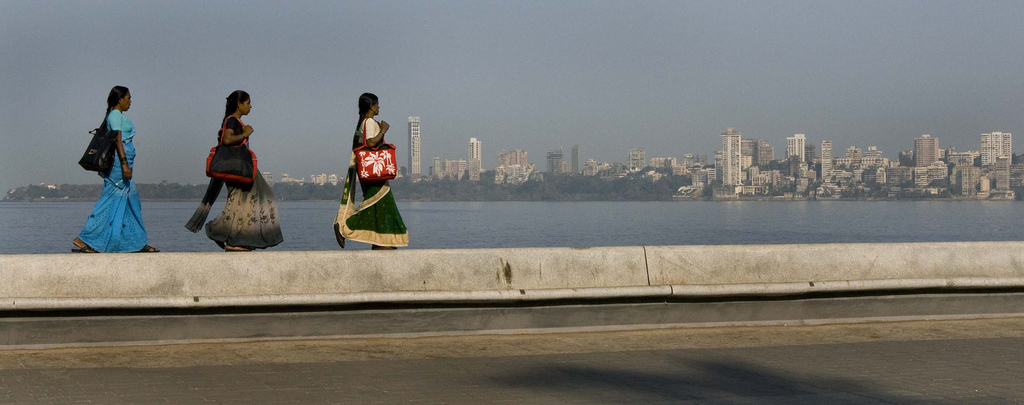
The rapid expansion of trade, investment and production linkages in the area spanning the Indian and Pacific Ocean regions, coupled with the shift of economic power from the trans-Atlantic to Asia, has given rise to a push to have the ‘Indo-Pacific’ region recognised as a single geo-strategic arc. But while the concept has gained currency, there has been insufficient attention paid to the geopolitical and geoeconomic drivers behind its emergence in particular national contexts.
In India, for instance, there are three distinct ways of approaching the Indo-Pacific concept. The first accepts the notion of the Indo-Pacific and sees it as a way to bring about a change in the direction of Indian foreign policy. Analysts like Bramha Chellaney, who want India to abandon its traditional non-aligned stance or who see China as a strategic threat, promote a vision of the Indo-Pacific in which India, together with the democracies of the region—the United States, Australia and Japan—take the lead in shaping the economic and security architecture of the region.
The second approach, however, rejects the Indo-Pacific idea on the basis that it’s potentially detrimental to India’s foreign policy goals. Commentators like D. Gnanagurunathan express scepticism about Indo-Pacific regionalism. They argue that adopting the ‘Indo-Pacific’ terminology is unnecessary and could mean that India would be aligned too closely with American interests. In their view, the maintenance of India’s autonomy to decide which countries to engage with is integral to its foreign policy interests. They argue that India’s strategic objectives are best met through engagement with countries in the region through forums such as the East Asia Summit and ASEAN, rather than new military partnerships.
The debate between these two views reflects a broader foreign policy debate in India, which intensified in the 2000s, over the place of non-alignment in India’s foreign policy and the nature of India’s relationships with the United States and a rising China. However, a third approach is starting to appear, which seeks to appropriate Indo-Pacific regionalism to further domestic economic imperatives, while upholding existing foreign policy traditions. And it’s being used in official Indian government statements and policies in the context of establishing a ‘plural, open and inclusive security architecture in the Indo-Pacific’. Specifically, the Indo-Pacific concept has been employed in such a way that it retains a focus on non-alignment, or ‘strategic autonomy’ (as it’s now known) and prioritises the creation of a stable regional environment that will help build key trade and investment linkages for India’s domestic economic development.
So while India supports established regional groupings like ASEAN and the East Asia Summit and norms related to the freedom of navigation and the peaceful settlement of maritime disputes in accordance with international law, its focus in the Indo-Pacific isn’t confined to a top-down structure built on multilateral institutions or alliances. Moreover, India is unsympathetic to American desires to build a regional architecture based on its preferred set of rules and regulations on issues like trade, investment, intellectual property rights and labour standards. Seen in this light, schemes such as the Trans-Pacific Partnership could undercut India’s strategic autonomy and potentially have a negative impact on its economic growth.
India much prefers ASEAN-centred regional projects and bottom-up, issue-driven regional cooperative arrangements, together with a broad collection of ‘strategic partnerships’ with individual countries. The latter are key to facilitating the growing economic linkages across the Indo-Pacific and to managing the security challenges from non-traditional sources that India’s national security advisor, Shivshankar Menon, has cited as requiring particular attention because they pose a significant challenge to India’s economic development.
For instance, India’s maritime trade in resources across both the Indian and western Pacific Oceans is of great importance, and this has resulted in a focus on securing sea-lanes and maritime governance through regional initiatives such as the Regional Cooperation Agreement on Combating Piracy and Armed Robbery against Ships in Asia. India also contributes to the African Union Mission in Somalia to address the link between piracy and weak state capacity, and it has begun bilateral and trilateral naval coordination and patrolling with Asian countries (China and Japan) as well as African partners, particularly, Kenya, Madagascar and the Seychelles.
The Australian government’s recent Australia in the Asian Century White Paper highlighted India as one of the countries with which Australia should have a broader and deeper engagement. Understanding the domestic dynamics of India’s desire for a plural and inclusive security architecture in the Indo-Pacific—and, in particular, its focus on non-traditional security and issue-driven cooperative ventures—rather than assuming that India will essentially share Australian and American preoccupations in the region, will be key to achieving a more substantial level of engagement.
Priya Chacko is a lecturer in International Politics at the University of Adelaide. Image courtesy of Flickr user Steve Evans.

